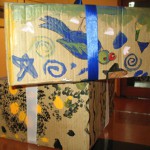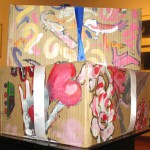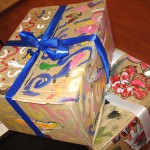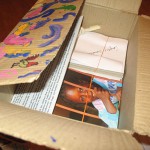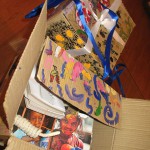Measuring the impact of the storytelling sessions has been on our mind for some time now. Not just us, but even some of our most committed volunteers have expressed this concern over the past two years. And so after much brain storming, discussions and exchange of ideas we finally put together a impact assessment tool that comprises of various games. These were first shared with the volunteers and centre coordinators for feedback. And after working on this for over four months we finally had the storytelling kits ready for each of the centres and I took on the task of demonstrating the games at all the centres.
The responses received are in many senses similar and comparable across the board although some centre children and coordinators have been more enthusiastic than others. I conducted demo-sessions in twelve out of thirteen centres. Some of the most eager participants came from Alipore centre, Dakhinapan centre, Tollygunge centre and Golf Green centre where not only the children but also the centre teachers and coordinators participated in the games. Kalighat centre proved to be a challenge as the centre teachers when asked to participate retorted—‘no comments’.
The picture cards worked very well as it elicited their natural responses. The picture cards with images of physically and mentally challenged people; fat people, underprivileged people and black people often evoked laughter. On prodding children picked up these images and said that they wouldn’t make friends with them. They wanted to be friends with film stars like Sharukh Khan, Kareena Kapoor, Dev as they were ‘popular’, ‘rich’, and ‘beautiful’ and ‘can fight well’. Some children wanted to befriend cartoon characters like Chota Bheem and Ben Ten. Boys often went for the picture card of Sachin Tendulkar. Some, however, picked cards of ordinary looking children and said that the child in the card had a sweet smile or that he or she looked ‘cute’.
Blurbs too evoked responses and showed their creative side. Although after first few answers other responses often turned out repetitive and they had to be asked not to copy the responses of their friends. In one centre however I divided the children into four groups and asked each group to blindly select a card and not only imagine what the people were saying in the picture but also build a story round it. The next group had to take the story forward. This got far better responses.
The word cards however were not very popular as most of the centre children are too young to comprehend the situations or respond sensibly. These cards could be introduced at the end of stories so that the children understand it better.
Rope proved to be a brilliant prop to the story I narrated and also to the post-storytelling discussion that ensued. I narrated the story of Rapunzel and made liberal alterations so that I could use the rope in diverse ways. Then I would often play a quiz asking them little details from the story and then as a reward give the child the rope and ask him to mould it into something. Some moulded it into river, another into snake so on and so forth. In some centres I tried a different method. After telling the story I would pass the rope round the group and ask the children to imagine if the object in their hands weren’t a rope what else could it be. Again I received fantastic responses and many of them wanted to try again and again. This really helped in encouraging imagination.
While playing these games, I observed that they would get restless after 40-45 minutes, so I introduced some physical games. One of those games was ‘rosogulla and pantua’. I learnt this from the centre children. ‘Rosogulla’ apparently meant that the all must squat and ‘pantua’ meant that they should all stand up. I added more. I told them that on hearing ‘jalebi’ they turn round and round on the spot where they were standing, on hearing ‘sevai’ they should hold hands and move replicating the movement of a wave. Then I introduced commands like ‘bring your right leg forward’, ‘nod your head’ etc. Games broke the monotony and made them excited about the process.
In future the kit should contain items that could be used to play physical and visual games. Writing cards can work with older children or volunteers may include them in their stories.
—Shailza Rai

